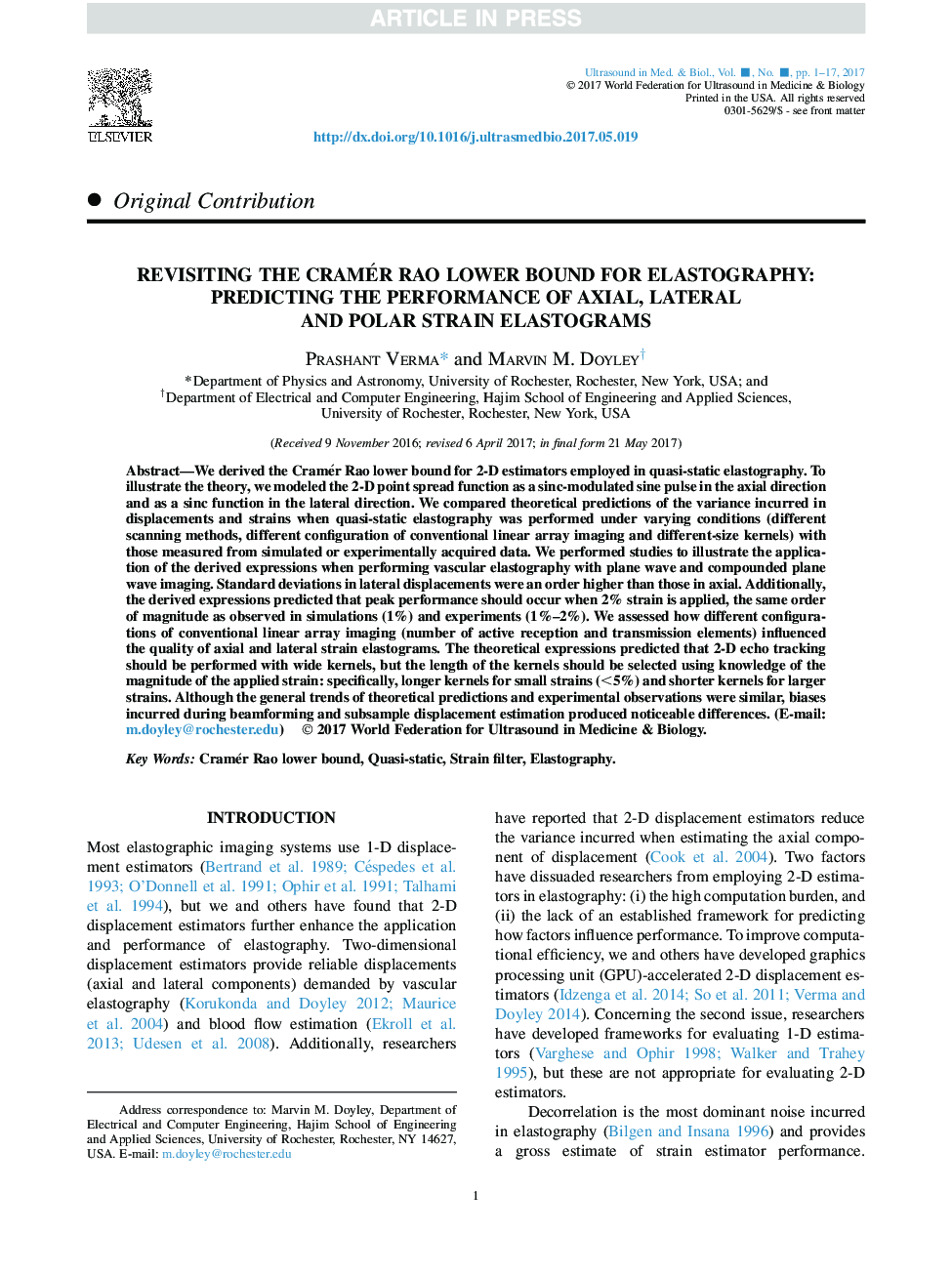| Article ID | Journal | Published Year | Pages | File Type |
|---|---|---|---|---|
| 5485598 | Ultrasound in Medicine & Biology | 2017 | 17 Pages |
Abstract
We derived the Cramér Rao lower bound for 2-D estimators employed in quasi-static elastography. To illustrate the theory, we modeled the 2-D point spread function as a sinc-modulated sine pulse in the axial direction and as a sinc function in the lateral direction. We compared theoretical predictions of the variance incurred in displacements and strains when quasi-static elastography was performed under varying conditions (different scanning methods, different configuration of conventional linear array imaging and different-size kernels) with those measured from simulated or experimentally acquired data. We performed studies to illustrate the application of the derived expressions when performing vascular elastography with plane wave and compounded plane wave imaging. Standard deviations in lateral displacements were an order higher than those in axial. Additionally, the derived expressions predicted that peak performance should occur when 2% strain is applied, the same order of magnitude as observed in simulations (1%) and experiments (1%-2%). We assessed how different configurations of conventional linear array imaging (number of active reception and transmission elements) influenced the quality of axial and lateral strain elastograms. The theoretical expressions predicted that 2-D echo tracking should be performed with wide kernels, but the length of the kernels should be selected using knowledge of the magnitude of the applied strain: specifically, longer kernels for small strains (<5%) and shorter kernels for larger strains. Although the general trends of theoretical predictions and experimental observations were similar, biases incurred during beamforming and subsample displacement estimation produced noticeable differences.
Related Topics
Physical Sciences and Engineering
Physics and Astronomy
Acoustics and Ultrasonics
Authors
Prashant Verma, Marvin M. Doyley,
